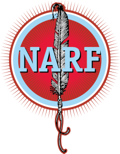
This fall, the Native Hawaiian Legal Corporation (NHLC) and the Native American Rights Fund (NARF) will offer two trainings in Hawai‘i on National Historic Preservation Act (1966) Section 106 consultation processes for the National Science Foundation’s (NSF) potential funding of the Thirty-Meter Telescope (TMT) on Mauna Kea (Maunakea). The Act requires federal agencies invite effected parties, including Native Hawaiian organizations, to consult before authorizing a new development project. The consultation process offers an opportunity to reveal how a proposed project would affect the tangible and intangible resources inherent to historic properties of traditional religious and cultural importance, such as Mauna Kea, and develop alternatives and avoid, minimize, and mitigate those effects.
“Native Hawaiians have long sought inclusion in decisions that impact sacred places and our survival as Kanaka Maoli, yet seldom have we been allowed to participate,” said NHLC Senior Staff Attorney Ashley Obrey. “The trainings we are offering next month will empower and prepare community members and leaders who have been invited to give input on proposed projects on Mauna Kea.”

In 2024, the NFS identified more than 425 consulting parties deeply impacted by TMT’s proposed development on Mauna Kea, a sacred place and the world’s tallest mountain from base to peak, located on Hawai‘i Island. This huge number of affected parties reflects the immense cultural and religious connection that Native Hawaiians maintain with their sacred place and the intense community investment in protecting the Mauna from further development and desecration.
Rising from the ocean floor up into the atmosphere beyond the clouds, Mauna Kea is an ancestral place of divine power for Kanaka Maoli (Native Hawaiians). Mauna Kea was the first-born child of Papahanamoku (Mother Earth) and Wākea (Sky Father).
The Mauna is partially protected as a state-designated historic place. In 2023, Native Hawaiian organizations and the State recommended that the U.S. National Park Service add Mauna Kea to the National Register of Historic Places (NRHP). The NRHP nomination’s public comment period has passed, and the nomination is currently being considered by the NPS.

Kanaka Maoli regard every part of Mauna Kea as a living temple. On Mauna Kea, children learn more about their history and identity. Ancestors remain at rest in designated and secret burial spots. Kanaka Maoli collect foods and materials on Maunakea to maintain traditional and customary practices and lifeways. Shrines, Native Hawaiian astronomical and navigation observatories, places of worship, historic trails, and ceremonial sites cover the mountain. Kanaka Maoli regard Mauna Kea as a sacred umbilical cord that connects each Native Hawaiian person to ancestors, the land, and the gods.
Kanaka Maoli continue to seek legal protections for Mauna Kea and have continuously defended this ancestor critical to the survival of their culture. Private funding and interests have long allowed development on Maun Kea to desecrate the sacred place without and, most often, against Kanaka Maoli consent.

NHLC and NARF have come together to assist Native Hawaiian organizations and communities in their efforts to ensure Kanaka Maoli engagement in Maunakea historic preservation processes. The trainings aim to clarify a process that has not yet been available to kiaʻi with respect to the Mauna. The trainings will be held on Hawai‘i Island on September 22 and on O‘ahu on September 23.
“To hold governments accountable to the laws that protect places like Mauna Kea, Kanaka Maoli have had an uphill battle even to gain a seat at the table, let alone for federal, state, and local officials to hear, understand, and meaningfully consider their testimony. We look forward to offering trainings on what legal protections exist, how the consultation process must proceed, and consulting parties’ rights within the process,” said NARF Legal Fellow Malia Gesuale.
Native Hawaiian organizations and Kanaka Maoli who would like to learn more about the September trainings can contact NHLC. Allies can ensure vital Native rights and sacred places are protected by donating to NHLC and NARF.
More blog posts

